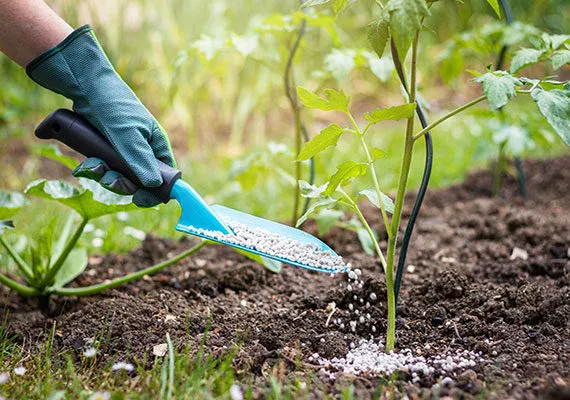
INCREASING SOIL pH IMPACTS THE PROFITABILITY OF CROP PRODUCTION
Given the current prices of mineral fertilizers, which are increasing from week to week, it is worth considering finding a middle ground in planning the fertilization of crops. For a long time, agronomy researchers have reported on the significant influence of soil pH and calcium ions on the utilization of mineral elements by plants contained in applied fertilizers and accumulated in the soil (Hałubowicz-Kliza 2006, Grzebisz 2016). It has been shown that properly executed liming contributes to increasing soil pH, and thereby to the increase in fertilization efficiency (Fig. 1). This clearly indicates that raising the soil pH from 4.5 to 6.0 results in more than a twofold increase in the efficiency of nitrogen, phosphorus, and potassium (Hałubowicz-Kliza 2006).

In the case of growing plants on soils with regulated pH, we can partially reduce NPK doses without worrying about crop yields, especially when it is at least moderately fertile soil. In the case of phosphorus, a beneficial change in soil pH from acidic to slightly acidic or neutral contributes to its transformation from an unassimilable (degraded) form to an assimilable one, which can further increase the amount of phosphorus directly available to crops.
However, lime cannot replace all the necessary elements for plants. Therefore, if we want to achieve profitable yields, we cannot completely abandon fertilizing our crops. The selection of doses of individual elements should always be based on chemical analyses of soil samples, which should be carried out by accredited state (OSChR) or private research stations.
With this information, we can determine the amount of fertilizer required for a given element necessary for the assumed crop yield. However, as Hałubowicz-Kliza (2006) has shown, soil pH affects the magnitude of this dose (Tab. 1). The relative yield in the case of crops sensitive to soil pH at pH 5.0 ranges from 2% (sugar beet) to 73% (winter rapeseed). Increasing the soil pH to 5.7, as shown by Hałubowicz-Kliza (2006), results in a significant increase in relative yield (Tab. 1).
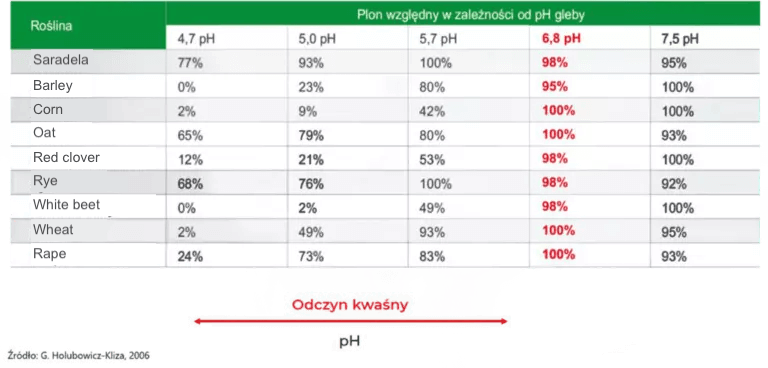
WELL-PLANNED CROP PRODUCTION – WHAT LIME TO USE?
Such an increase in soil pH is possible thanks to the use of 0.5 tons of granulated carbonate lime Polcalc III Generation. This was confirmed by our own research conducted by Polcalc Calcium Fertilizers Ltd. at the Research Station WRiB UTP in Mochełek. The application of 1 ton of the mentioned fertilizer resulted in an increase in soil pH by 1 pH unit. Such a significant change is the result of the high reactivity of Polcalc III Generation fertilizer, which is 100%.
The use of this lime contributes to a rapid increase in soil pH, which significantly affects the profitability of cultivating crops sensitive to soil acidification, including, among others, winter wheat, winter rapeseed, and maize. For these species, the profitability of cultivation was calculated at different soil pH levels, taking into account the average market prices of applied NPK elements, grain and rapeseed prices (current as of October 12, 2021), and the results of Hałubowicz-Kliza’s research (2006) presented in Tab. 1. The cost of purchasing 1 ton of Polcalc III Generation fertilizer used to change soil pH was also included in the calculations.
WHAT IS THE APPROXIMATE PROFITABILITY OF CROP PRODUCTION IN POLAND?
The results of profitability simulations have been presented in the form of graphs (Fig. 1–6). In the case of winter wheat cultivation, the use of 1 ton of Polcalc III Generation lime resulted in a profit of 100–1800 PLN per hectare (Fig. 2). For winter rapeseed, the profit ranged from 1100 to 1200 PLN/ha (Fig. 4). Meanwhile, for maize, the estimated profit ranged from 1200 to 2900 PLN/ha (Fig. 6). The estimated (forecasted) profit values for selected crop species vary widely and depend on the final soil pH value obtained after applying 1 ton of granulated Polcalc III Generation lime.
For detailed information about fertilizers produced by Polcalc Calcium Fertilizers Ltd., we encourage you to contact our distributors or visit our website: www.polcalc.pl.
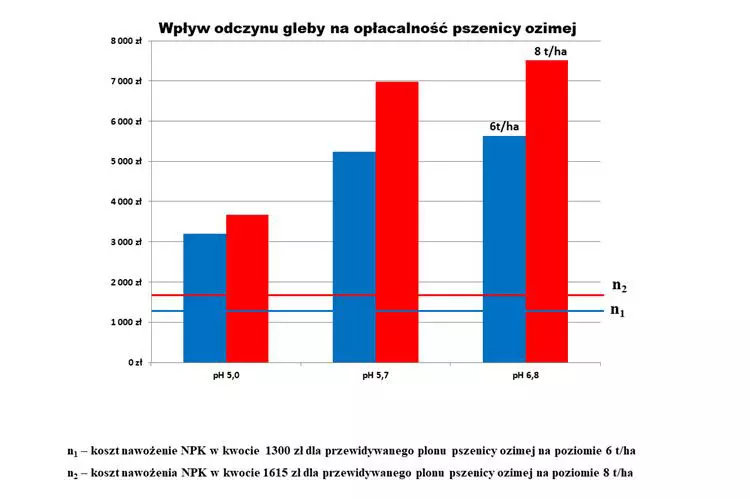
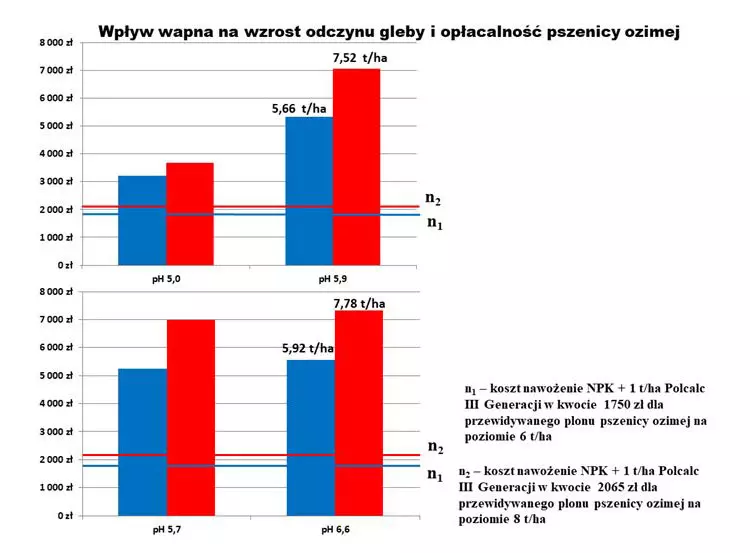
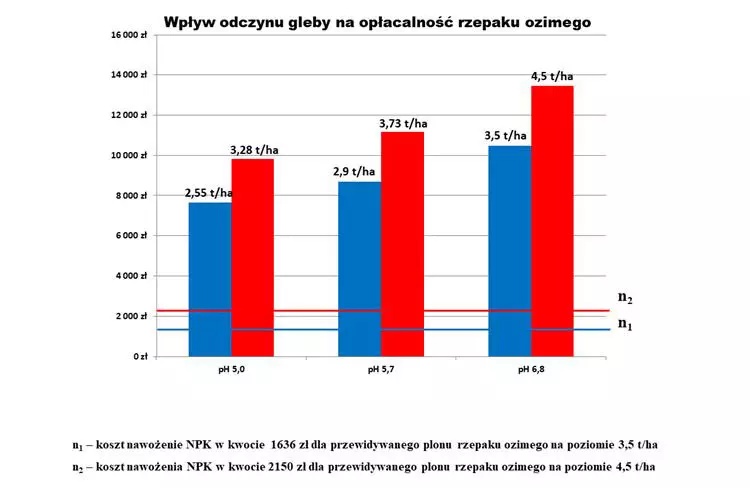
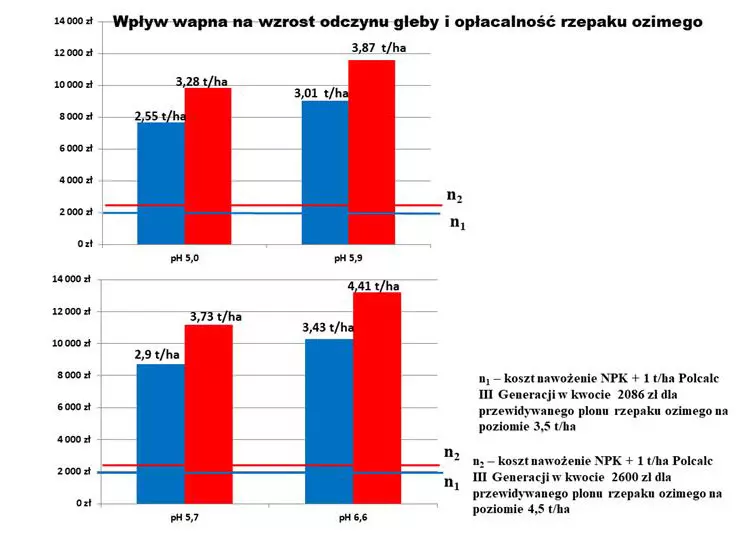
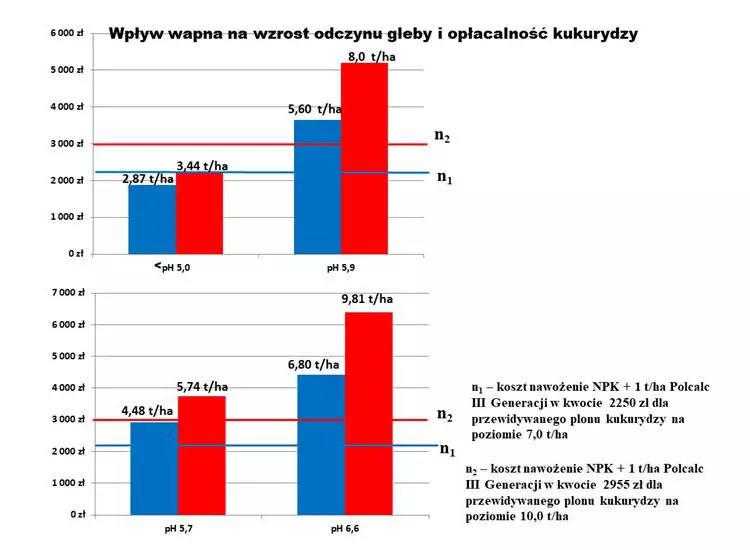
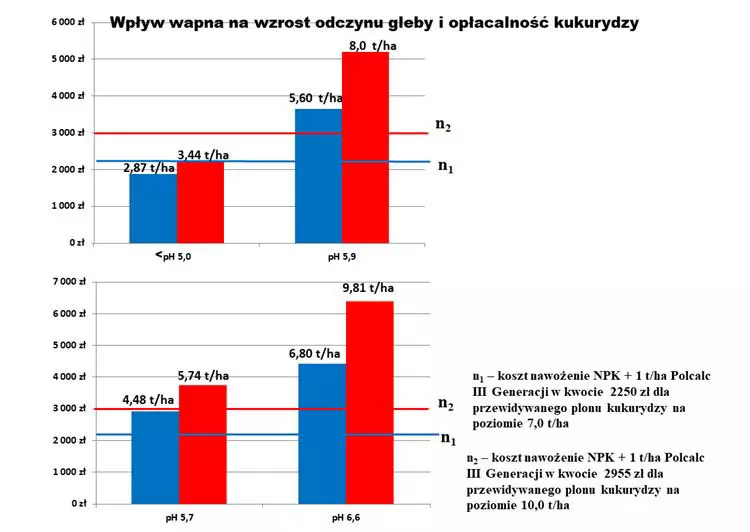
WHY IS SOIL LIMING CURRENTLY THE BEST SOLUTION?
The simulations presented above were created solely for advisory purposes. The prices of fertilizers, and above all, the fuels necessary for their spreading, are changing very dynamically. Therefore, the charts presented above should be analyzed solely for illustrative purposes. The amounts given may not correspond to the current market situation. However, it is worth taking the charts illustrating increased yields when using appropriate preparations very literally. They clearly show how liming affects the quantitative increase in yields by improving the overall condition of cultivated plants. This process directly affects their condition and resistance, which allows us to assume that healthy plants will yield abundant crops.
It is no secret that in conditions where soil pH is regulated, fertilizers are better absorbed. As a result, their potential can be fully utilized. This, in turn, has a positive effect on the amount of fertilizer that needs to be applied to the soil to achieve satisfactory yields.






